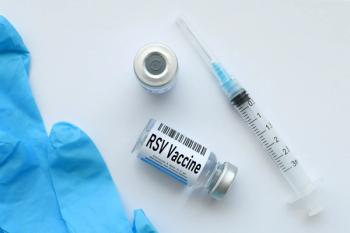
AUC 5 vs AUC 6: MUSC Study Highlights the Trade-offs in Neoadjuvant Breast Cancer Treatment
Lacy La Fever, PharmD, MS, discussed outcomes associated with different carboplatin AUC dosing strategies.
In an interview with Pharmacy Times, Lacy La Fever, PharmD, MS, PGY-2 oncology pharmacy resident at the Medical University of South Carolina (MUSC), discussed a study conducted at MUSC that compared the use of an area under the curve (AUC) of 5 vs an AUC of 6 of carboplatin for early-stage breast cancer (eBC) treatment. The study results were presented at the 2025 HOPA Annual Meeting in Portland, Oregon.
Pharmacy Times: Can you give an overview of your presentation at HOPA? What prompted you to do the study?
Lacy La Fever, PharmD, MS: One of the biggest topics in the literature right now is the use of an AUC of 5 for carboplatin in neoadjuvant treatment for [eBC], compared to an AUC of 6, which is historically what's been used. At MUSC, in the past year or so, we've started implementing the AUC of 5. There isn’t a lot of guidance yet, so it’s a gray area in terms of whether using an AUC of 5 is just as effective as an AUC of 6.
Since we’ve started using it, and because we want to ensure we’re making appropriate recommendations, we decided to review our patient data to see if there are any differences in safety while still maintaining efficacy comparable to an AUC of 6.
The main outcome we looked at was pathological complete response [pCR]—meaning, at the time of surgery, there’s no invasive disease in the tissue or surrounding lymph nodes. That determination is made post surgery, so that was our primary end point.
We also looked at toxicities—mainly hematologic toxicities like cytopenias, anemia, neutropenia, and so on—as well as other adverse effects like hospitalizations. We evaluated whether there were any dose reductions, because this is curative intent therapy. Ideally, we don’t want to hold doses, reduce them, or discontinue therapy. We want the patient to complete all planned cycles.
Ultimately, in terms of results, we did see a bit of a difference. Dose reductions and discontinuations were more common with the AUC of 6, whereas none occurred with the AUC of 5. However, when it came to pathological complete response, more patients in the AUC of 6 group achieved that outcome compared to the AUC of 5 group. So, there’s a bit of variability between the two.
Pharmacy Times: How does this study inform your institution’s current carboplatin dosing practices moving forward?
La Fever: So far, the downside or limitation was that we only had 9 patients in the AUC of 5. It was very new implementing this, so we didn’t have a large patient population for that. But there is promise that patients are getting that pathologic complete response with less toxicities and less dose reductions. So we’re seeing our patients complete the whole 6 cycles that they need prior to going to surgery.
So I think, give it a couple more years—like redo the study with a bigger population, AUC 5—to kind of really help us see if we could give our patients, like, that lower dose of carboplatin and get them to the result we want them to with less toxicity. So I think there’s a lot of promise. But because the population is so small, I don’t think it’s going to influence a lot right now.
But for patients that we’re a little concerned—whether it’s age or other comorbidities—that using an AUC of 6 could be problematic, I still think it’s okay to use an AUC of 5. I don’t think it’s ruling it out completely, but I just think there needs to be more research.
Pharmacy Times: What kind of prospective data or trial design would you like to see to more definitively answer the AUC 5 vs AUC 6 question?
La Fever: I feel like the pathologic complete response is probably the easiest to, like, obtain for patients. I think a big thing that comes next is, using the lower AUC of 5—what about recurrence? Like, do we see recurrence when it was curative intent? Like, when does that happen, if it does happen? So, I feel like that’s later down the line if we start utilizing AUC of 5 more often, but those are probably more long-term things to follow up on.
But I really feel like that in most studies, that pathologic complete response is what we go off of, because we know that just theoretically shows better outcomes and prognosis for patients that have that response with the neoadjuvant setting. There’s not a lot I would change, minus having more patients in the populations to kind of have more even distribution.
Pharmacy Times: What role can the pharmacist play in these settings?
La Fever: Yes, so I think one of the biggest things is, with deciding on an AUC of 5 or 6, having that discussion with providers. If it’s a young, healthy patient that you’re not too concerned about, having a higher AUC of 6—you can still talk about that—but knowing which patient population might benefit from an AUC of 5 and just kind of having that discussion with the provider. It’s still a gray area, but studies have been showing fewer toxicities.
I’m concerned, and I want to make sure they get to surgery and there’s no delay in that as well. So I think having the discussion and then ultimately always just educating the patient and everything. There’s not a big difference between a carboplatin AUC of 6 vs 5, but just so they’re aware of what [adverse] effects and toxicities to think of and, like, let us know about—so we can be on top of it to make sure we can get them through whatever dose they use without any interruptions or anything.
Newsletter
Stay informed on drug updates, treatment guidelines, and pharmacy practice trends—subscribe to Pharmacy Times for weekly clinical insights.







































































































































































































